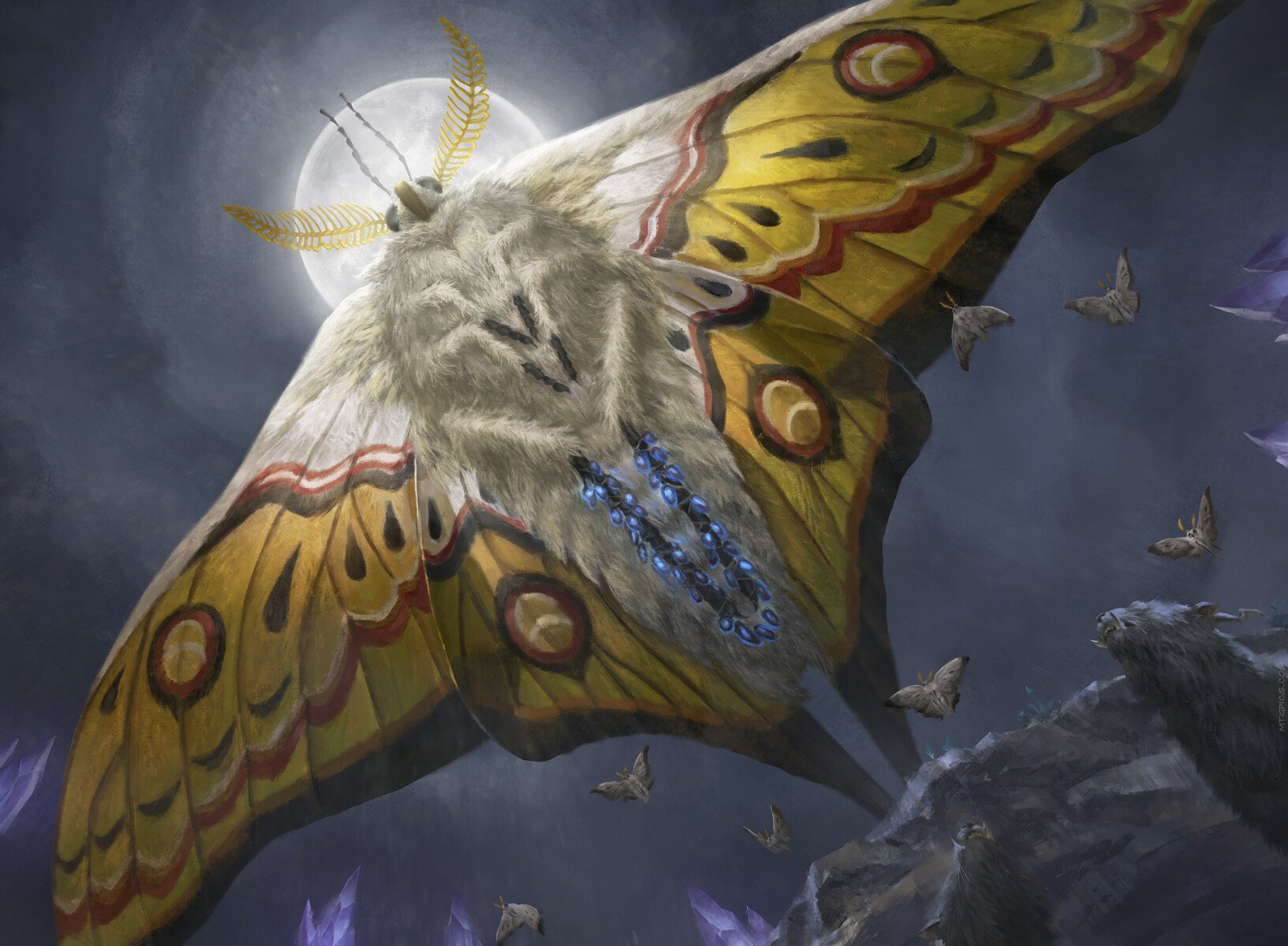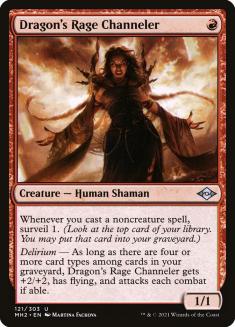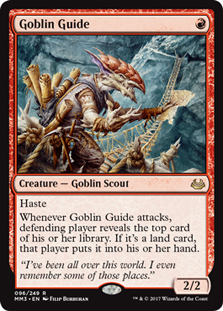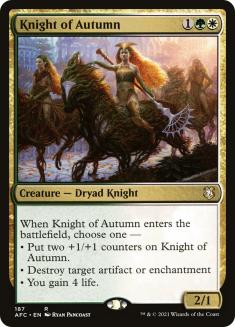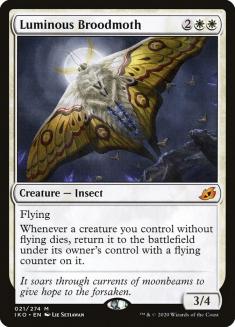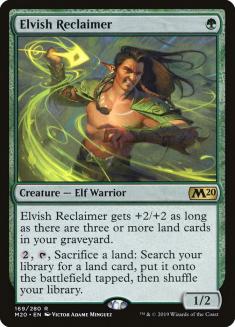After months of figuring out exactly how Modern Horizons 2 fits into the format, it appears that Modern’s metagame churn is starting to slow down. We’re starting to see a relatively similar metagame week in and week out, with the usual suspects like Orzhov Hammer (Lurrus) and Grixis Death’s Shadow (Lurrus) consistently at the top of the standings.
But while this may be a source of concern for players who enjoy an ever-evolving metagame, it doesn’t mean that Modern has entered a period of stagnation until its next major shake-up. Instead, the arena on which the metagame battle is fought has shifted. Where once it was about finding the right deck for that point in the metagame’s evolution or finding a new deck that the metagame is unprepared for, now your edge depends on innovating within the established archetypes.
Simply put, we’ve entered a part of the metagame cycle where deck tuning matters more than ever before. In particular, if you find an unexpected twist on an established archetype, you can take a metagame by surprise because most of your opponents will expect and play around the cards in a stock list.
Looking over the results from last weekend, I found several of these minor innovations in known decklists, some of which I think have promise and some that I don’t. So if you’re thinking of putting a twist on the deck you’ve been playing for a while now, take a look at which of these innovations you should buy, and which you should sell.
Sell: Dragon’s Rage Channeler in Boros Burn
Creatures (12)
Lands (18)
Spells (30)

Burn is one of the most iconic decks in Modern, having been around for essentially the entire history of the format. But that doesn’t mean it can’t use a facelift every now and then. We know that Dragon’s Rage Channeler is one of the best cards in Modern Horizons 2. And Mishra’s Bauble is a low-opportunity-cost card to help achieve delirium and supercharge Lurrus, which you should be playing regardless.
Normally this kind of addition would be an easy win, but it ends up being awkward here for two reasons. One is that you’re cutting Goblin Guide. It’s perhaps the most iconic card in the deck and that’s because it’s one of the best, even if players are naturally better at answering it because they’re preparing for Ragavan, Nimble Pilferer. I’m not so attached as to say cutting Goblin Guide is never correct; in fact, Burn has historically sideboarded the card out in heavy creature matchups since it’s easy to trump on the battlefield then. But it does mean that this change comes at a relatively high opportunity cost because of the cards you’re cutting.
With a high opportunity cost, you need to have a high payoff, and while the new additions are proven staples of the format, they don’t fit as well into Burn as they do more interactive decks. Sure, you can use your burn spells to control the battlefield while Lurrus takes over the game, but everyone kills Lurrus on sight and you don’t have any other sources of card advantage to make this plan come together.
Burn operates on a specific axis of lowering the opponent’s life total to zero in the most direct way possible. Adding another angle of attack would be great for the deck, since it would make traditional hate like Sunset Revelry and Blossoming Calm much less effective, but the reality is that you need to devote a ton of deck space to burn spells in order to make the deck consistent. Card selection from Dragon’s Rage Channeler or Mishra’s Bauble combined with fetchlands isn’t enough to let you trim further down on burn to fit in the necessary interaction to make that secondary plan work.
Ultimately, attempts to make Burn into something it’s not end up looking like worse Prowess decks, and I think that’s what happened here. Prowess has a surprising ability to play and win long games, while still retaining many explosive draws. It finds the right balance by eschewing cards like Lava Spike and Boros Charm that only play one role. This list only goes halfway there, and ends up being worse than both Prowess and traditional Burn.
Buy: Abzan, Not Golgari, Yawgmoth
Creatures (29)
- 4 Birds of Paradise
- 4 Wall of Roots
- 4 Strangleroot Geist
- 1 Geralf's Messenger
- 4 Young Wolf
- 1 Zulaport Cutthroat
- 1 Hapatra, Vizier of Poisons
- 1 Knight of Autumn
- 4 Yawgmoth, Thran Physician
- 1 Gilded Goose
- 1 Luminous Broodmoth
- 1 Prosperous Innkeeper
- 2 Ignoble Hierarch
Planeswalkers (2)
Lands (21)
Spells (8)

The additions of Grist, the Hunger Tide and Ignoble Hierarch have catapulted Golgari Yawgmoth into the upper echelons of Modern. The former made the deck’s fair gameplan much better by offering much-needed interaction in addition to the cascading advantage we’ve come to expect from planeswalkers. The latter made the deck’s mana better as well as making it more consistent, since the curve is significantly higher than for most Modern decks.
This is a combo deck that now scores well on all of my metrics: speed, resilience, and consistency. It has the card advantage to contend with heavy removal decks and the redundancy to play through counters and discard. But for any linear deck, things get tough as it becomes a known quantity and players have enough time to test the matchup and learn your tricks. Golgari Yawgmoth is a particularly tricky deck, which gives well-practiced players a sizable edge, but it doesn’t hurt to have a few new ones up your sleeve.
This list moves into white for some additional tutor targets in both the maindeck and the sideboard. The sideboard hate cards are fine additions, but they don’t move the needle as much as the maindeck pair, which are the ones I want to focus on.
Knight of Autumn isn’t a particularly powerful card, but an answer to pesky artifacts and enchantments is a welcome addition to any toolbox, and that’s its main role. But this deck takes great advantage of the lifegain option on Knight of Autumn’s trigger, since with Yawgmoth every point means an extra card. Having a way to gain a bit more life in a pinch makes it much easier to use your life total as a resource, thereby helping your fair gameplan as well.
Luminous Broodmoth is the most exciting addition here. With it on the battlefield, your undying creatures will never die because both Broodmoth and undying will trigger simultaneously, allowing you to order the triggers how you want. That way, you can choose to return it with either a +1/+1 counter or a flying counter. Then the next time it dies, whichever trigger you chose to order last the previous time will trigger again, effectively resetting the first one. So if your Young Wolf came back first as a 2/2, it’ll then come back as a 1/1 with flying the next time, then as a 2/2, then as a 1/1 flyer, and so on.
This means Broodmoth lets you establish a loop with Yawgmoth and any one undying creature. But even more than that, it protects your other key pieces from removal, notably Yawgmoth. In many games you’ll want to get Broodmoth on the battlefield first, where it effectively acts as a Flagbearer, forcing your opponent to have multiple removal spells if they want to stop your engine. The dual purpose of combo piece and protection piece is what’s exciting, and gives the deck an added element of both resilience and consistency that many players won’t be prepared for.
The cost of the splash is in the manabase, but because you’re most often finding the white creatures with Chord of Calling and Eldritch Evolution, you can cheat a bit on your white source count. A pair of Temple Gardens, some fetchlands, and the Birds of Paradise you’re already playing will be fine. I could see adding a couple more fetchlands to this list, but that’s a minor quibble. The important takeaway is that the white splash is legit.
Buy: Elvish Reclaimer in Jund Midrange
Creatures (15)
- 4 Tarmogoyf
- 4 Elvish Reclaimer
- 1 Kroxa, Titan of Death's Hunger
- 2 Tourach, Dread Cantor
- 4 Ragavan, Nimble Pilferer
Planeswalkers (4)
Lands (23)
Spells (18)

Jund Midrange is among the best decks in Modern, and while the removal suite is always changing to keep up with the metagame, the threat base has been largely the same for months. So it was quite the surprise to see this list, with Elvish Reclaimer taking the place of Dragon’s Rage Channeler, in the Top 8 of a recent challenge. And that Top 8 finish understates the deck’s performance, since the pilot went undefeated in the Swiss rounds before falling to Mono-Green Tron, a bad but unlikely matchup.
The obvious synergy here is with Elvish Reclaimer and Urza’s Saga, since the former finds the latter on-curve to start making Construct tokens. This sets you up to start recurring Saga with Wrenn and Six, which is the main engine this deck uses to take over long games. I’d like to see a Nurturing Peatland somewhere in the manabase to offer another angle, but Reclaimer bolsters the deck’s core engine regardless, and that’s what’s most important.
You lose a little natural card selection by cutting Dragon’s Rage Channeler, but in exchange you get access to your best card more often, so I’d call it a wash. On Elvish Reclaimer’s side you have a creature that often survives a Lightning Bolt. Bolt isn’t as prominent as it once was, but it’s still a staple of the format.
More importantly, Elvish Reclaimer lets you play more defensively than Dragon’s Rage Channeler. This is a midrange deck where versatility is everything, so Channeler being forced to attack is awkward when you’re behind and simply want to trade. Elvish Reclaimer can bring the beatdowns, albeit on the ground, but also lets you turtle up when necessary.
And when it comes to versatility, it’s hard to beat a toolbox. Bojuka Bog, Blast Zone, and Ghost Quarter in the sideboard offer easy points of interaction in key matchups that you have easy access to on Turn 2 in most games.
Given the popularity and obvious power of Dragon’s Rage Channeler, I expect players to be skeptical of cutting it for an unproven commodity, but I’m ready to buy in now. Elvish Reclaimer is a powerful card that has been waiting for a chance to shine in Modern, even without Flagstones of Trokair.
Sell: Four-Color Midrange
Creatures (11)
- 1 Snapcaster Mage
- 2 Kroxa, Titan of Death's Hunger
- 4 Dragon's Rage Channeler
- 4 Ragavan, Nimble Pilferer
Lands (21)
Spells (28)

I’ll be honest, when I first scrolled through this list, I assumed it was a Death’s Shadow variant. But Grixis Midrange with all the trappings of Death’s Shadow besides the namesake card has been on the fringes of Modern for a while now, and this list is taking its inspiration from that deck, only with a white splash for additional removal.
Prismatic Ending and Kaya’s Guile are fine additions to a deck like this. They offer a lot of versatility, thereby making it less likely that you get caught staring down a threat that none of your cards can answer. With Triomes alongside shocklands and fetchlands, the mana is easy to work out, but I’m still selling this one. I’m selling because I think adding better removal doesn’t solve this deck’s main problem, which is that it’s a midrange deck trying to be a control deck.
When you cut Death’s Shadow for more spot removal, you’re saying that you want to play a slower, longer game. But because of the restrictions of Lurrus, you don’t have any threats that position you to have a stronger late-game than Grixis Death’s Shadow or Jund Midrange. In fact, the latter’s Wrenn-Saga loops likely trump anything this deck is doing in the late-game. Compare this to Azorius Control and its various planeswalkers, utility lands, and powerful card draw that dominate the late-game and you see how this deck is lacking.
Ragavan and Dragon’s Rage Channeler offer you an aggressive element, which is nice; still, if you’re going to play down that path, I’d prefer to go for Death’s Shadow as well, and have a cheap threat that can both apply pressure and dominate the battlefield. Much like the Burn list above, I think this list is ultimately caught between two other decks, and is worse than either. No change in the removal suite is going to compensate for such a fundamental flaw. And if you do decide to play Death’s Shadow, the opportunity cost of adding a Triome to make the mana work is too high to make the splash worthwhile.
A metagame where the best deck changes every week may be more exciting from a viewing perspective, but as a player I’ve always liked these kinds of metagames, where you select your weapon of choice and each week the challenge is to find a way to keep it fresh and find something unexpected that’s still powerful enough to work. It’s a tough challenge, but there are few feelings better than the look on your opponent’s face when you play a card that they had no idea was coming and have no way to beat.
Modern is entering a more mature phase in its development, and I can’t wait to see what new tech emerges next.

